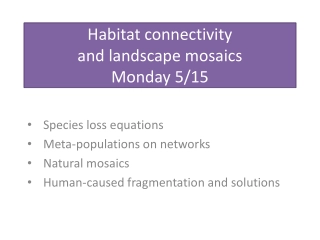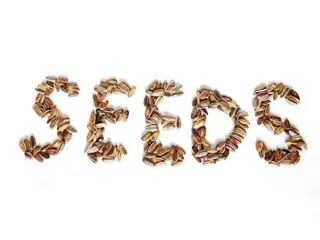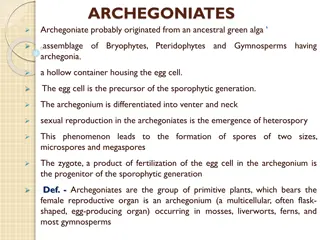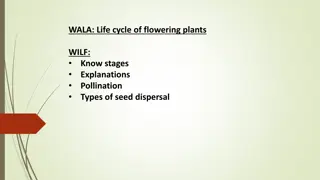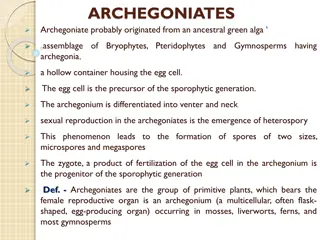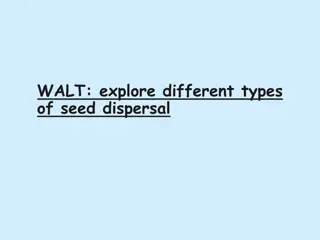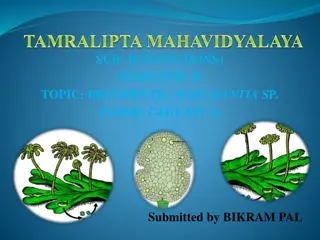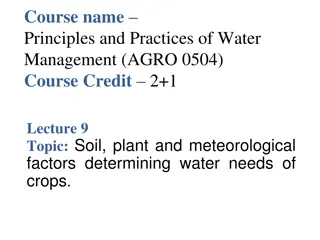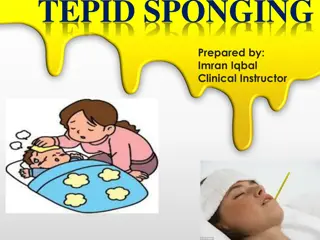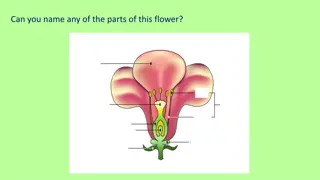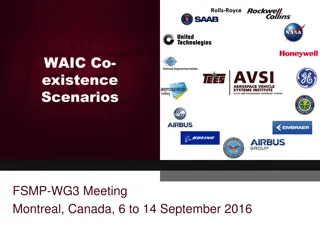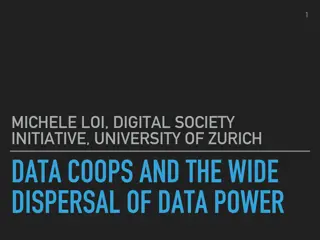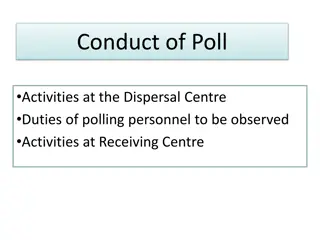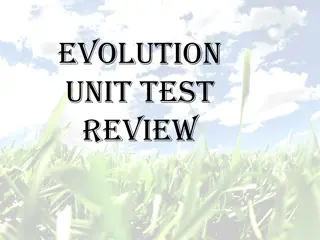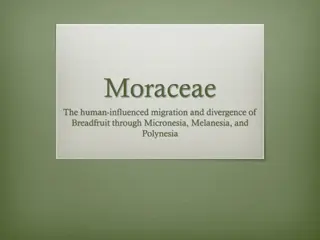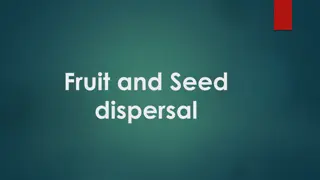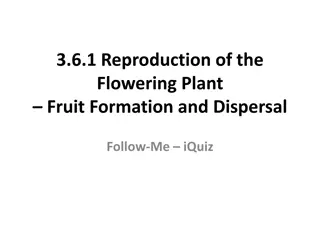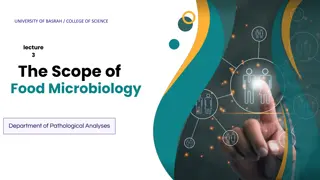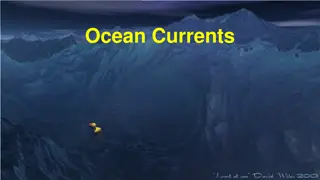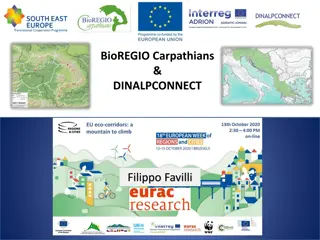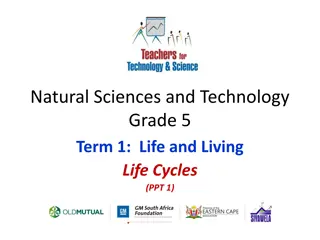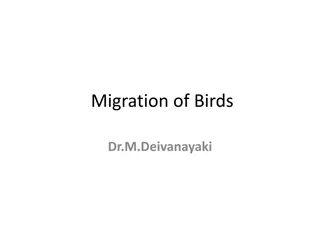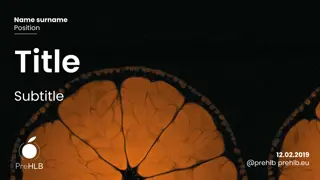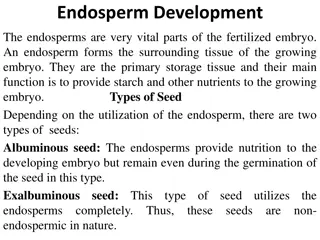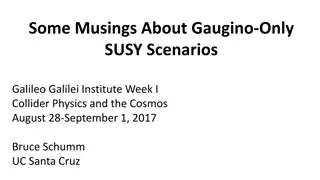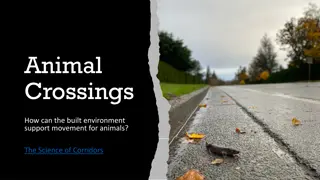Scenarios 2024 Modelling Methodologies
Explore the cutting-edge methodologies and tools implemented in the TYNDP 2024 Scenarios to enhance energy system representation and sector integration. Innovations include hydrogen modeling, heat and EV modeling improvements, offshore wind hubs, and deviation scenarios to meet EU targets.
1 views • 41 slides
Understanding Habitat Connectivity and Landscape Mosaics
Explore the importance of habitat connectivity, landscape mosaics, and metapopulations in preserving biodiversity. Delve into species loss equations, natural mosaics, and human-caused fragmentation, along with solutions. Review concepts related to optimizing land use for biodiversity and economic in
0 views • 40 slides
The Fascinating World of Seeds: Shapes, Sizes, and Survival Strategies
Seeds come in a variety of shapes, sizes, colors, and textures. They have different ways of dispersal, such as through wind, animals, water, or even explosions. The seed coat plays a crucial role in protecting the seed. Understanding the diversity and survival strategies of seeds gives us insight in
5 views • 13 slides
Cadets Code of Conduct During Leave
Cadets must adhere to a set of guidelines before dispersal for leave, including safe custody of belongings, coordination of transport, and strict adherence to timings. During leave, they are required to travel in decent dress, take care of personal safety, and not discuss college matters in public.
1 views • 6 slides
Chapter Two Governing Equations of Heat Conduction
This compilation covers examples and governing equations of heat conduction, including boundary conditions and scenarios involving one-dimensional conduction in various structures. It explores scenarios like steady-state conditions in a plane wall, heat conduction along a pipeline, and temperature d
0 views • 12 slides
Evolution and Characteristics of Archegoniates in Plant Kingdom
Archegoniates, believed to have originated from ancestral green algae, exhibit unique characteristics such as heterospory, presence of archegonia for egg production, and multicellular generations with heteromorphic alternation. They adapted to land by developing specialized structures like rhizoids,
0 views • 15 slides
Understanding the Life Cycle of Flowering Plants
Explore the fascinating life cycle of flowering plants, from pollination to seed dispersal. Discover the stages, types of pollination, and various methods of seed dispersal through engaging visuals and resources. Enhance your knowledge and understanding of plant biology with interactive activities a
1 views • 7 slides
Case-Based Triage Scenarios for New EMS Clinicians
These case-based scenarios offer an educational tool for new EMS clinicians to apply the National Guideline for Field Triage of Injured Patients. Developed with hypothetical system resources from diverse community settings, these scenarios prompt users to assess and make triage decisions based on va
0 views • 35 slides
Understanding Global Distribution Patterns of Animals in Climatology and Biogeography
Studying the distribution patterns of animals globally involves complex factors such as environmental conditions, zonal patterns, and latitudinal influences. Animal distribution is influenced by factors like sunlight availability, vegetation diversity, and evolutionary origins. Different animal zone
3 views • 20 slides
Archegoniates: Primitive Plants with Unique Reproductive Structures
Archegoniates are a group of primitive plants believed to have originated from ancestral green algae. They possess distinct reproductive structures such as archegonia, which house the egg cell and give rise to the sporophytic generation. Heterospory in archegoniates leads to the formation of microsp
1 views • 15 slides
Guide to EVM and VVPAT Components, Connections, and Preparation for Poll
This comprehensive guide covers the components of Electronic Voting Machines (EVM) and Voter Verifiable Paper Audit Trail (VVPAT) systems, including protocols for setting up, connection processes for mock and actual polls, and instructions for masking/unmasking ballot buttons on the Balloting Unit (
0 views • 13 slides
Understanding Seed Dispersal in Flowering Plants
Explore the fascinating world of seed dispersal in flowering plants, from wind dispersal to bursting pods and shaking mechanisms. Discover the various methods plants use to spread their seeds and ensure their survival. Dive into the stages of a flowering plant's life cycle and learn how germination,
1 views • 16 slides
Understanding Bryophyte Marchantia: Botanical Insights
Marchantia, a thalloid bryophyte, exhibits dichotomous branching and a gametophyte-dominant life cycle. It is dioecious with distinct male and female thalli bearing antheridia and archegonia. With around 65 global species, including common ones like M. polymorpha, it thrives in moist, sandy habitats
1 views • 14 slides
Factors Affecting Water Needs of Crops in Agriculture
Understanding the soil, plant, and meteorological factors influencing water requirements in crop cultivation is essential for successful agriculture. This course delves into the impact of climate, solar radiation, temperature, pressure, wind, and humidity on crop distribution, growth, and productivi
0 views • 19 slides
Tepid Sponging Procedure in Patient Care
Tepid sponging is a technique used to reduce body temperature in patients with fever. This procedure involves applying lukewarm water to the skin surface to promote heat dispersal. Key steps include preparing the patient, collecting equipment, sponging with tepid water, and monitoring the patient's
0 views • 7 slides
Explore the Fascinating Life Cycle of Flowering Plants
Discover the various parts of a flower such as petals, stigma, stamen, anther, filament, nectary, sepal, ovary, and ovule. Learn about the role each part plays in plant reproduction by exploring activities on flower anatomy, seed dispersal, pollination, germination, and growth. Engage with interacti
0 views • 7 slides
Challenges in Security Analysis of Advanced Reactors
Analyzing the security aspects of advanced reactors involves considerations such as physical protection, facility sabotage, nuclear terrorism, cyber vulnerabilities, and emerging technologies. Highlighted risks include the need to protect nuclear material, insider threats, terrorist attacks causing
0 views • 8 slides
Aviation Co-existence Scenarios at FSMP-WG3 Meeting in Montreal, Canada
Explore the co-existence scenarios discussed at the FSMP-WG3 Meeting in Montreal, Canada, focusing on airport stand interference analysis, victim aircraft scenarios, and landing scenarios. The dimensions, geometry, and guidelines from the IATA Airport Development Reference Manual highlight the safet
11 views • 4 slides
Fascinating Facts About Bats Around the World
Bats are incredible mammals found in various habitats worldwide, with over 1,300 species known. They play vital roles such as pollination, pest control, and seed dispersal. From the tiny bumblebee bat to the giant flying foxes, bats showcase diverse adaptations and behaviors like echolocation and un
0 views • 19 slides
Data Coops and Power Dispersal in Digital Society
Michele Loi from the Digital Society Initiative at the University of Zurich discusses the concept of data cooperatives and their role in distributing data power. These cooperative structures allow for democratic control over data management, emphasizing individual ownership and shared asset utilizat
0 views • 19 slides
Polling Activities and Duties at Various Centers
Duties and activities at dispersal, receiving, distribution centers, and on polling day are crucial for ensuring a fair election process. Micro-observers play a key role in observing and reporting any irregularities. Polling personnel must adhere to strict guidelines, such as verifying voter identif
1 views • 58 slides
American Hazelnut (Corylus Americana) Plant Guide
The American Hazelnut, also known as Corylus Americana, is a versatile plant that thrives in rich, moist, and well-drained soils. It can tolerate varying light conditions and attracts a variety of wildlife. Understanding its growth patterns, pests, reproduction requirements, and seed dispersal metho
0 views • 8 slides
Managing Radiation Accidents: Challenges and Strategies
Radiation accidents present significant challenges in terms of managing exposure and mitigating consequences. International organizations like the IAEA and WHO provide guidelines for handling such incidents. Possible scenarios include dispersal of radioactive substances in various contexts, such as
0 views • 35 slides
Evolution Unit Test Review - Adaptations and Benefits Matching
In this review, you will match various adaptations to the benefits they provide in the context of evolution. From heavy fur of the Snow Leopard to wing-like shape of maple seeds, explore how different adaptations help organisms cope with climate, obtain food and water, attract mates, escape predator
0 views • 21 slides
Human-Influenced Migration and Divergence of Breadfruit
The human-influenced migration of Breadfruit through Micronesia, Melanesia, and Polynesia, with origins attributed to two wild breadfruit species. The dispersal pattern confirmed by breadfruit DNA analysis reveals a low A. mariannensis content in Melanesia and Polynesia, and a high A. mariannensis x
0 views • 7 slides
Plant Reproduction: Pollination and Seed Dispersal Mechanisms
Explore the fascinating world of plant reproduction through pollination and seed dispersal mechanisms. Learn about the different types of pollination, such as self-pollination and cross-pollination, and the importance of fruit and seed dispersal. Discover how plants use various strategies to ensure
0 views • 6 slides
Reproduction of Flowering Plants: Seed Development and Endospermic Seeds
The quiz content discusses the process of seed development in flowering plants, focusing on the formation and dispersal of fruits. It touches upon the different parts of a seed, such as the seed leaf, food store, ovule, and endosperm, highlighting their roles in the growth of new plants. Additionall
0 views • 50 slides
ERCOT Market Credit Manager Proposal Analysis
This document outlines EAL change proposals scenarios for ERCOT Market Credit Manager, including definitions of invoice exposures, current EAL formulas, and various scenarios affecting the calculation. It covers invoice exposure definitions, current EAL formula versus scenarios #1, #1a, and #1b, as
0 views • 11 slides
Automotive Considerations for IEEE 11-14/0586r0 Simulation Scenarios
This document discusses the integration of automotive-related scenarios into IEEE 802.11ax simulation scenarios, focusing on the use of high-speed WLAN in vehicles, particularly during traffic jams. The characteristics, requirements, and challenges of establishing a data link in traffic congestion s
0 views • 11 slides
Understanding Sediment Dispersion along the Continental Margin
This content explores the influences and types of sediment dispersion systems along the continental margin. Processes affecting sediment supply, depositional environments, and different dispersal systems like Estuarine Accumulations Dominated and Marine Dispersal Dominated are discussed. Walsh and N
0 views • 8 slides
Insights into Airborne Microorganisms and Fungi: Implications for Food Safety
Airborne microorganisms and fungi play crucial roles in food microbiology, with various species surviving in the atmosphere despite hostile conditions. Bacteria like Bacillus and Streptomyces disperse through air turbulence, while fungi such as Penicillium and Aspergillus produce spores resistant to
0 views • 9 slides
Protecting Native Songbird Populations - Facts and Program Ideas
The National Audubon Society estimates that 5 billion birds are killed annually, with windows and cats posing significant threats. Songbirds are vital for biodiversity and seed dispersal in ecosystems. Explore program ideas to raise awareness and protect songbird populations.
0 views • 5 slides
The Importance of Ocean Currents in Global Systems
Ocean currents play a vital role in transporting heat, nutrients, organisms, and influencing weather patterns and climates. They impact commerce, gas exchanges, nutrient exchanges, pollution dispersal, and fisheries. The interaction between surface and deep-sea currents forms the global ocean convey
0 views • 25 slides
Integrated Management of Biological and Landscape Diversity in the Carpathians
The BioREGIO Carpathians and DINALPCONNECT projects focus on fostering ecological connectivity in the Carpathians region through initiatives like Work Package 5 Continuity and Connectivity. The projects aim to enhance sustainability, regional development, and coexistence between human society and wi
0 views • 24 slides
Understanding Life Cycles: Plants and Animals
Explore the fascinating world of life cycles in plants and animals through engaging visuals and descriptions. From the process of germination to the different stages of growth and development, discover how living organisms move through their life cycles. Topics include plant pollination, seed disper
0 views • 14 slides
Fascinating Insights into Bird Migration Patterns and Adaptations
Bird migration is a captivating natural phenomenon driven by factors such as food availability and daylight changes. Various species exhibit remarkable adaptations in physiology and behavior to undertake these long journeys, benefiting ecosystems and aiding in the dispersal of species. While migrati
0 views • 5 slides
PRE-HLB Project: Protecting EU Citriculture from Huanglongbing
The EU citriculture faces a significant threat from Huanglongbing (HLB), a highly destructive citrus disease. The PRE-HLB project aims to monitor and improve strategies to tackle HLB, including surveillance, contingency planning, and control measures. By addressing the rapid dispersal and severity o
0 views • 17 slides
Understanding Endosperm Development in Plants
Endosperms are crucial for embryo development, providing nutrients and starch. There are two main types of seeds based on endosperm utilization: albuminous and exalbuminous. Endosperm development involves three types: nuclear, cellular, and helobial. Nuclear endosperms feature free-nuclear divisions
0 views • 6 slides
Gaugino-Only SUSY Scenarios at Galileo Galilei Institute
Musings on Gaugino-Only SUSY scenarios focusing on gaugino/higgsino states, gaugino production, two-step scenarios, recent reports, and single multiplet scenarios. Discusses different particle accountings, production cross sections, and exploration by experiments like ATLAS and CMS.
0 views • 14 slides
Enhancing Wildlife Connectivity Through Built Environments
Explore the significance of corridors in supporting animal movement within the built environment. Learn about connectivity, dispersal, and migration's importance for biodiversity conservation. Discover actionable steps to raise awareness and ensure the safe passage of wildlife, such as deer, in frag
0 views • 7 slides

